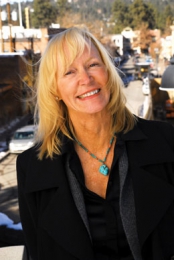 We pose a few questions to the people of Central Oregon beginning with how are we going to get out of our economic turmoil? Do we have a collective vision for our region that will help us achieve a vibrant economic climate once again? Can we continue to stumble in our current direction — each community, each government entity identifying their own selective problems and focusing on them in a singular self-deprecating fashion? Do we have a concise and cohesive plan to market our region to the outside world?
We pose a few questions to the people of Central Oregon beginning with how are we going to get out of our economic turmoil? Do we have a collective vision for our region that will help us achieve a vibrant economic climate once again? Can we continue to stumble in our current direction — each community, each government entity identifying their own selective problems and focusing on them in a singular self-deprecating fashion? Do we have a concise and cohesive plan to market our region to the outside world?
A recent conversation with Andrew Spreadborough, program administrator for Central Oregon Intergovernmental Council, confirms that a 2006 Economic Development Strategy was developed by the organization that identified infrastructure needs throughout the region. COIC has a mission to provide education, retraining and economic development services that are slated to positively affect regional employment, individual lives, the business community and local government.
The 15-member board is made up of elected officials appointed by each of the member governments and appointed representatives of key economic sectors – business and industry, tourism and recreation, agribusiness and agriculture, timber and wood products, and the unemployed/underemployed.
This sounds like a group of people who would have a vested interest and enthusiastic desire to seek a comprehensive economic solution for our region. In fact COIC does have a newly appointed CEDS Committee (Comprehensive Economic Development Strategy) – which is the regional strategy required by the federal Economic Development Administration for a region to receive any EDA dollars for public works, technical assistance, planning or economic adjustment.
Spreadborough admits, however, that the current economic strategy of COIC is not only outdated (and was developed during boom times here), but it might not propose the most appropriate solutions for our current economic woes.
On another front, Economic Development of Central Oregon (EDCO) is dedicated to diversifying our regional economy by attracting new investment and jobs. EDCO does this by recruiting new companies and by helping traded-sector firms already in Central Oregon expand. There is little doubt that EDCO has done a stellar job of serving the manufacturing and high tech firms in our region as well as recruiting new companies.
The new EDCO Venture Catalyst program, funded through a federal grant, is slated to focus on building and strengthening the local aviation/aerospace and renewable energy sectors. In addition, EDCO now has staff leadership in several communities in the region that focus specifically on economic development in that area (Bend, Redmond, Madras, Prineville).
Over the years EDCO has played a significant marketing role in targeting and recruiting business expansion. Its current goals as listed on its website are to facilitate new job creation and capital investment, champion strategic projects, balance/diversify the region’s industry mix, be the Northwest’s business information leader and continue to improve the financial strength of EDCO.
It’s not clear where other regional organizations fit into the economic development equation such as the Central Oregon Visitors Association, Central Oregon Association of Realtors, City Club of Central Oregon, Central Oregon Builders Association and the Oregon Innovation Center, a non-profit think tank based in Bend.
The Oregon Innovation Center website states some pretty powerful stuff: “Today, success depends on your ability to continually think, re-think, and re-invent. Challenging times require innovative thought and an intentional process. The Innovation Center provides resources to speed innovation along, make it more efficient, and weave it into the fabric of your organization’s everyday activities.” Wow, we are you when we need you!?
As we look within our respective communities we have elected officials and their staff struggling with budgets, parking fees, staff shortages and providing basic services. Important items indeed, but are any of our communities making an attempt to look at the big picture in our region and help stage a strategy for recouping our once triumphant economy?
In typical times successful economic development takes cooperation and coordination between public and private entities. These are not typical times. These are extraordinary times and we need extraordinary measures.
The type of cooperation and innovation that was once effective for our region is no longer working. We need a new vision, a new plan and we need it today.
Where is the leadership that will help forge smart investment decisions, develop sound financing strategies, identify sustainable growth and build solid partnerships that benefit all of our communities?
Who is up for this challenge? PHA


